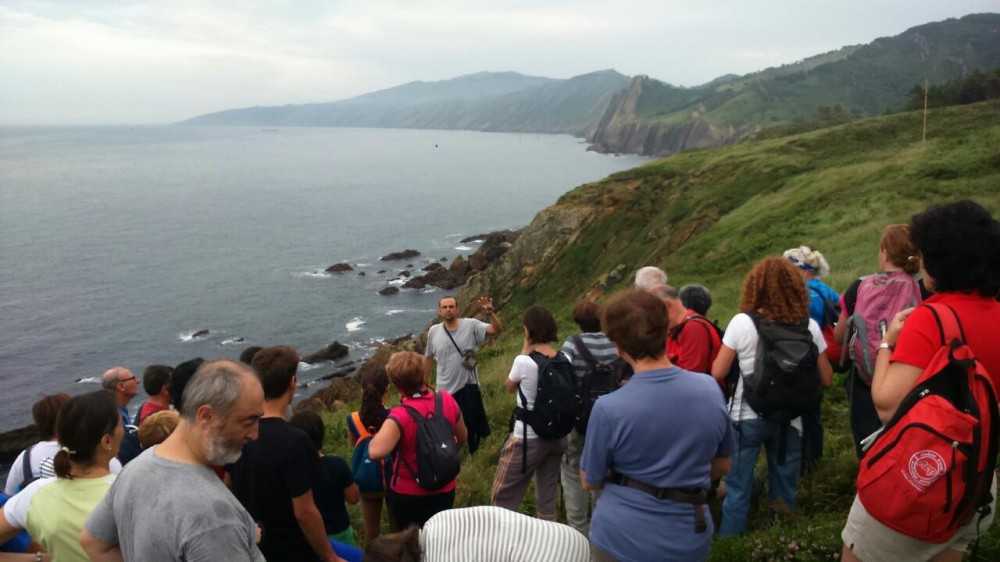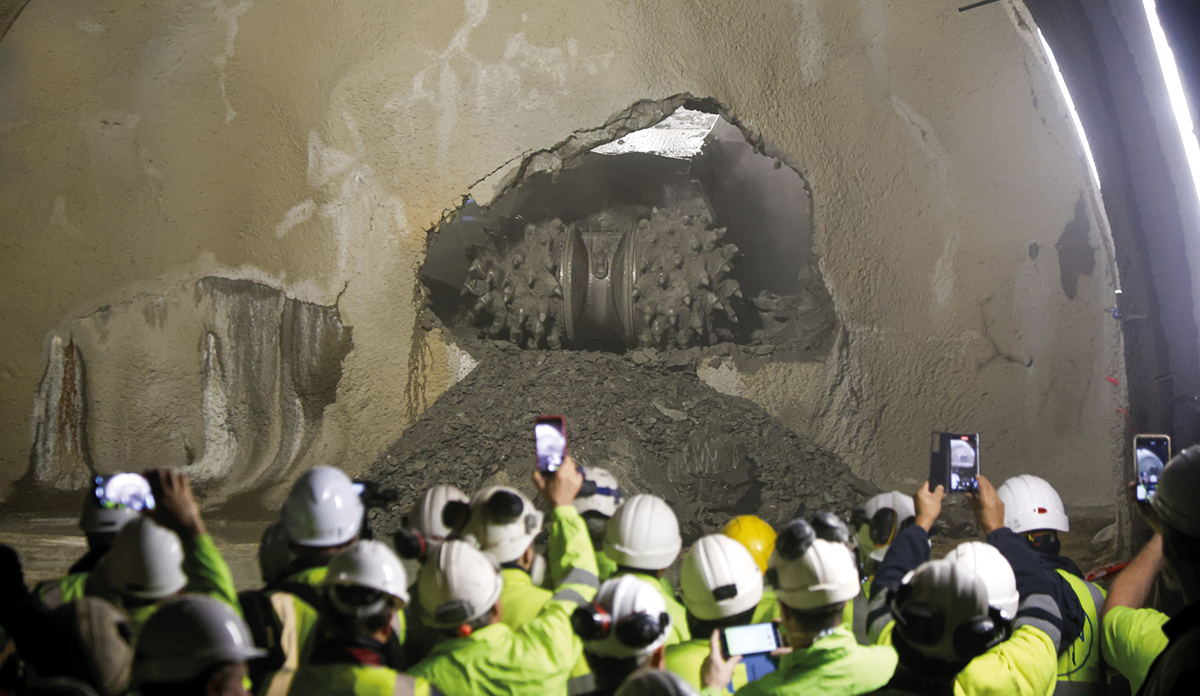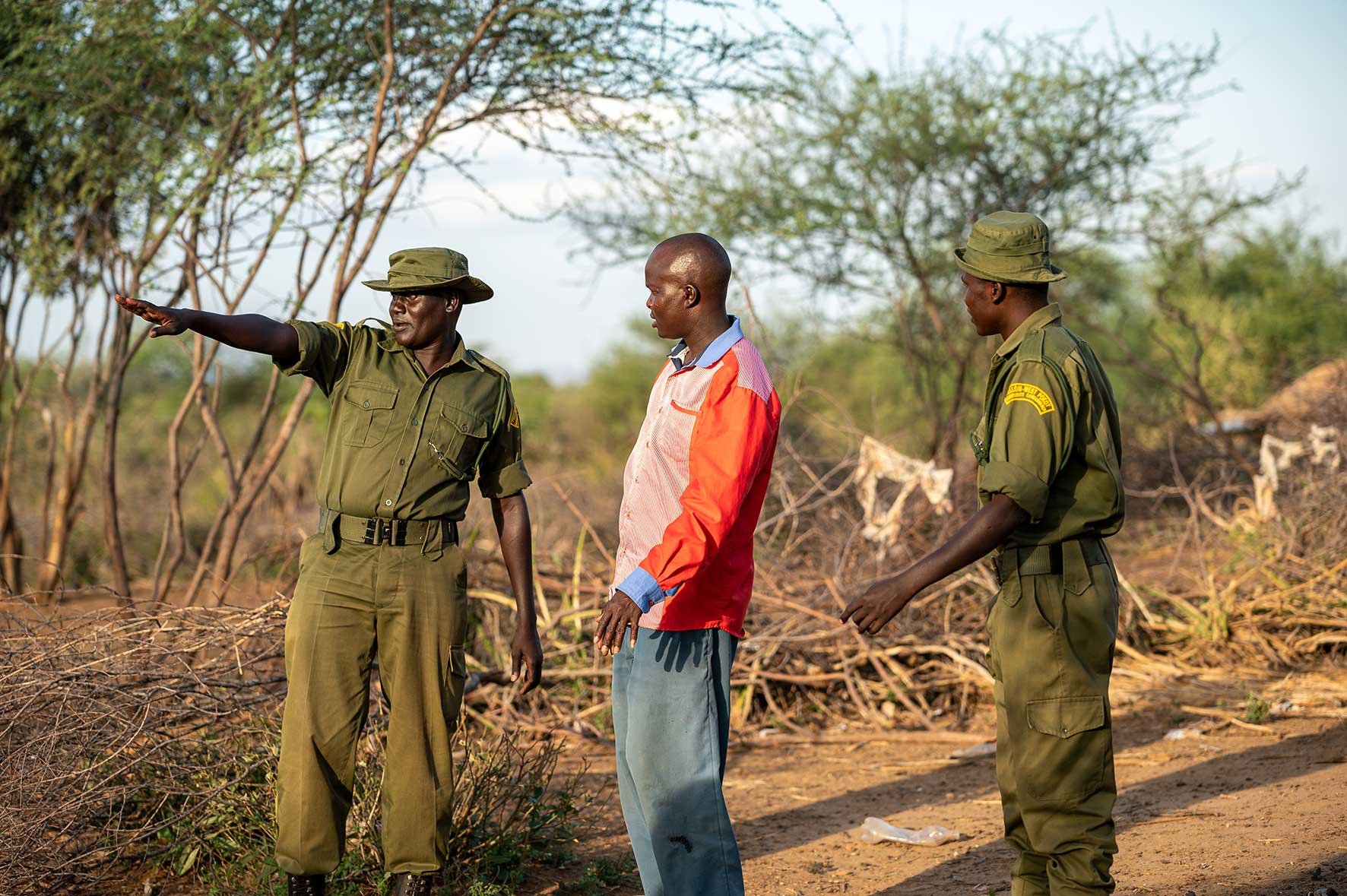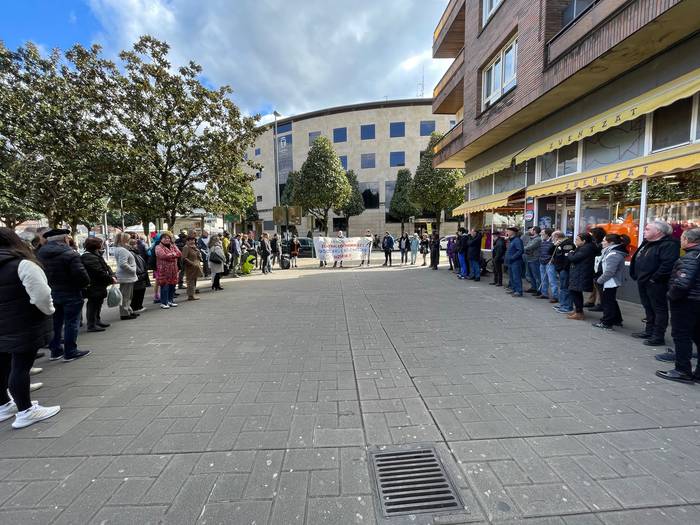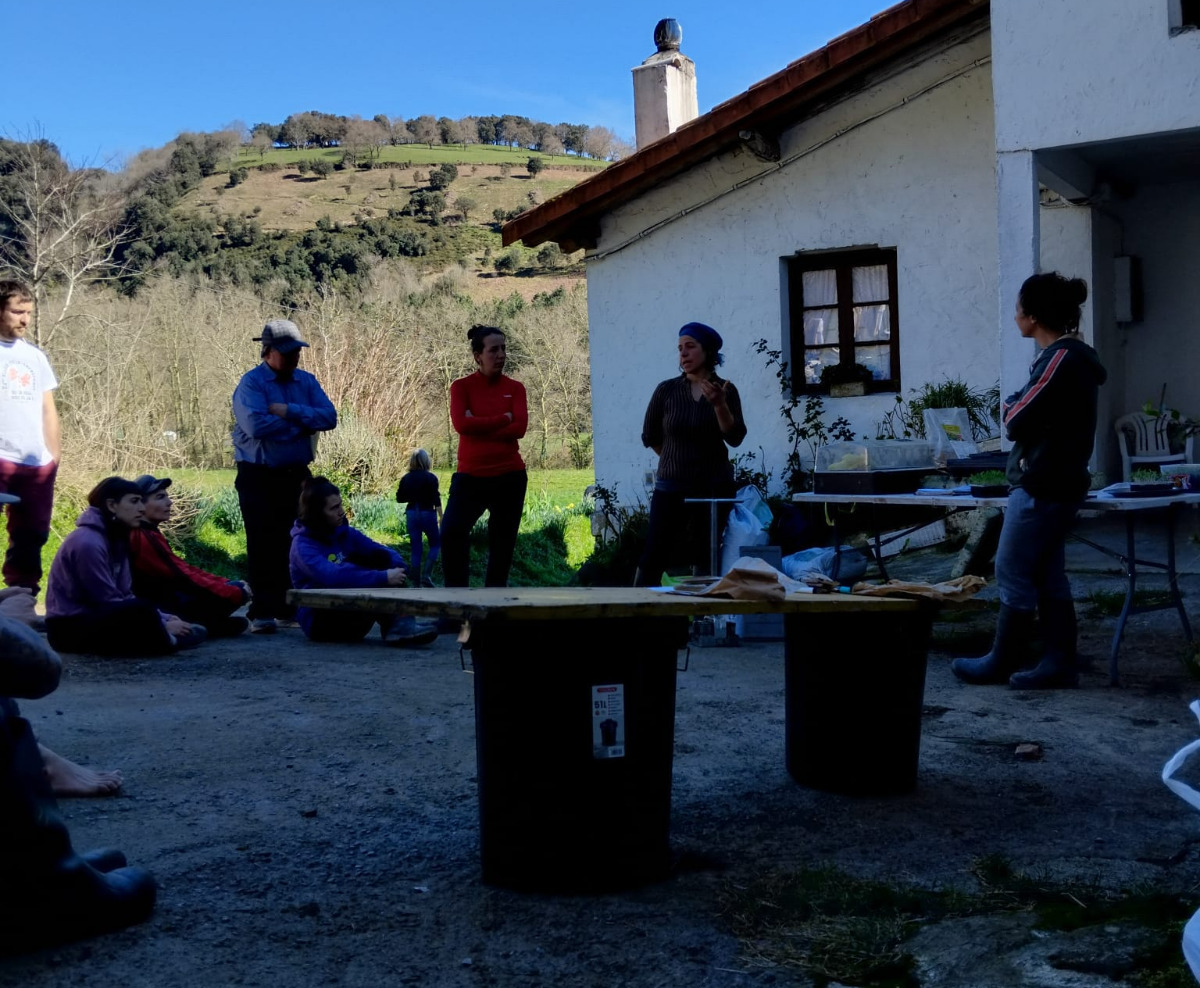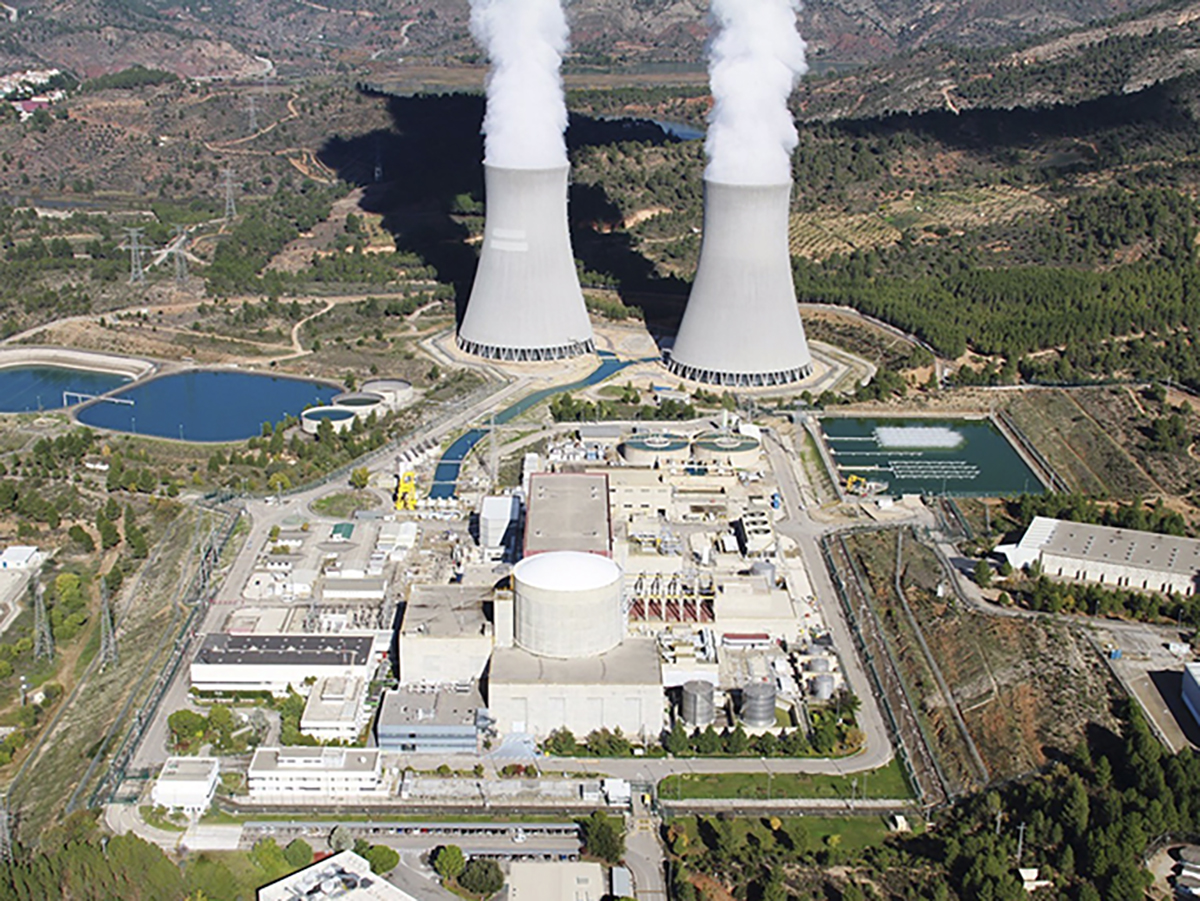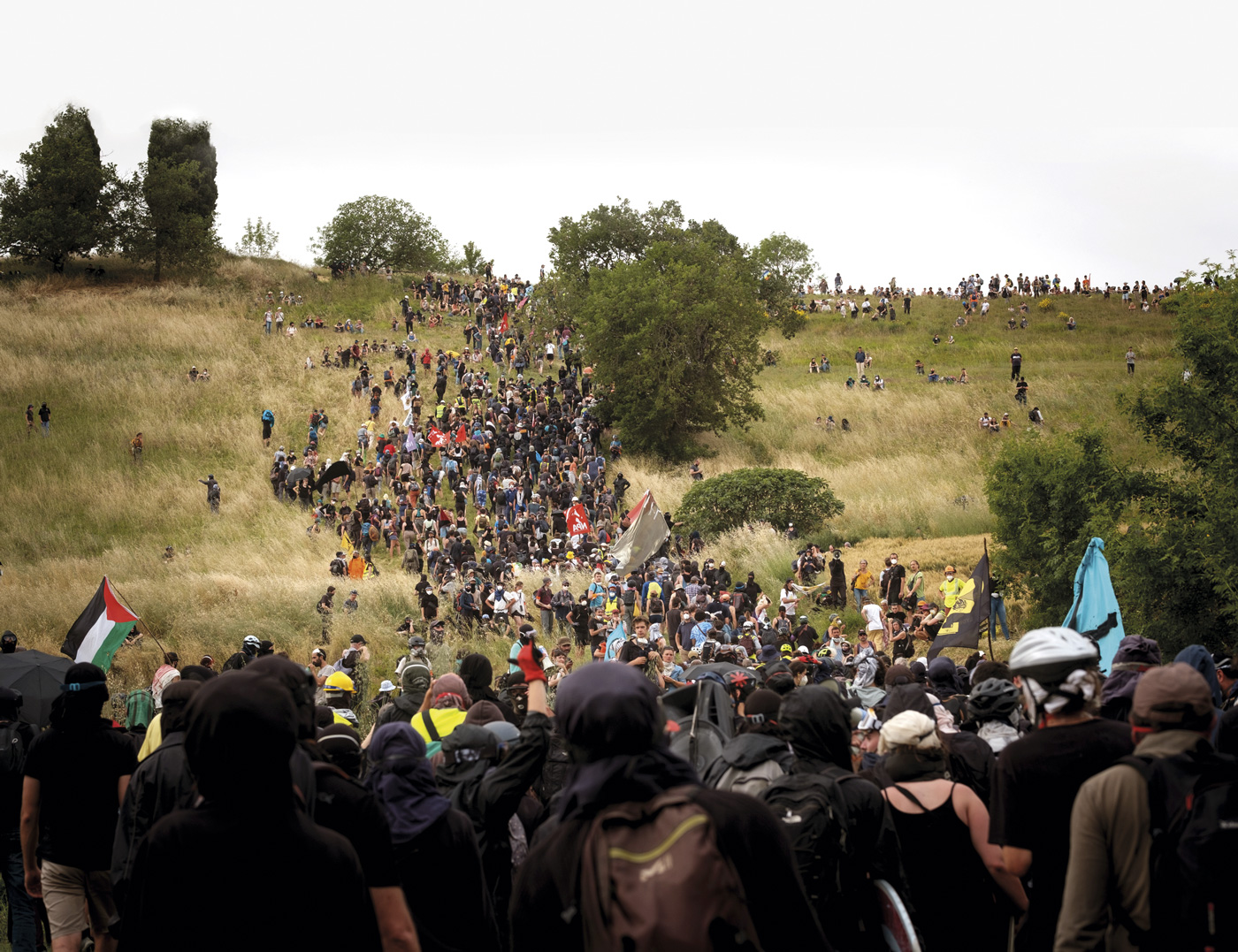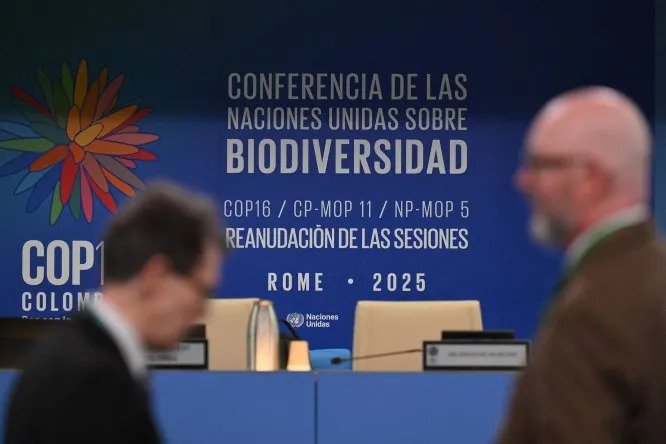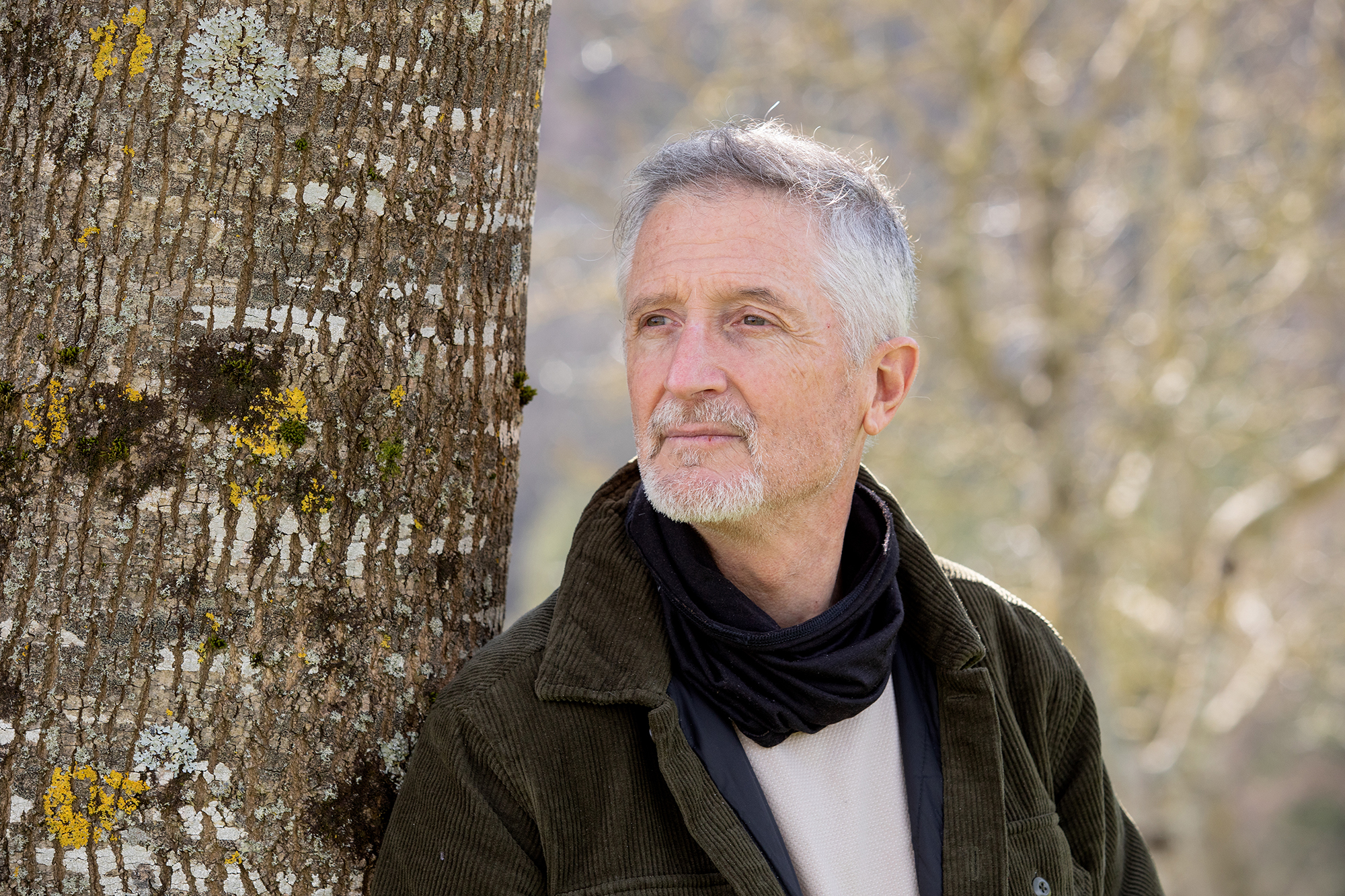If the incinerator has shown the first poisons... What to do?
- The ToxiWatch Foundation has presented the results of the five-year monitoring of emissions from the incinerator at Gipuzkoa. Worrying results because we are talking about pollutants that can cause serious health damage to living beings and, in particular, to humans. The remarkable results, being a new incinerator built with supposedly cutting-edge technology, are striking because it already accumulates the emission levels of the old incinerators.

The toxicologist Abel Arkenbout and biologist Kirsten Bouman, members of the ToxiWatch Foundation, specialized in monitoring industrial emissions in the Netherlands, came almost directly from Slovakia on 22 May, following the presentation in Turna nad Bodvou of the results of the contamination of the cement burning waste there. A warm atmosphere seems to be that in Turna nad Bodvou (3,200 inhabitants, along with Kosice, the second largest city in Slovakia), the complaints of the people for long years, the pressures of the owner of the factory and the superior cadres, the talk of the investigators monitored by the police for fear of confrontations… and, look!, the local public television is in the three-minute broadcast interview.
At first glance, they have not had the same fate when scientists have come to Gipuzkoa, public and private media always have more important issues on the news agenda, of course, the province’s best-selling newspapers. In this sense, the citizens who read the media in Basque are to be congratulated: The chronicles offered by Berria, ARGIA and Noaua have allowed the Fundación ToxiWatch to deduce, after five years of extensive monitoring, that the new incinerators of Zubieta are already evident the pollutants emitted in the air, soil and surrounding life.
.jpg)
The ToxiWatch Foundation is monitoring the emissions of eight European incinerators, including Zubieta.
By silence, if we look more closely at the closer visit of scientists, we can see that the Guipuzkoan panorama has undergone a fundamental change with the analyses presented by ToxiWatch in Hernani, General Boards of Gipuzkoa and Usurbil, which have shown that in this highly urbanized, already contaminated area, the number and levels of venoms have increased since Zubieta began to burn residues in large furnaces. This ugly picture forces everyone who has to do with the source of pollution to move and work. The inhabitants of the environment of the incinerator have reason to concern themselves in addition to the former. Furnace managers now have some awkward questions on the table. And, in the end, the political leaders of what public infrastructure is, are in a hurry to seek and solve the problems. ToxiWatch has advanced some steps that can be taken… but before introducing them it is appropriate to summarize what scientists have found.
Starting before the incinerator
ToxiWatch was for the first time in the Basque Country in 2018, invited by the Anti-Prerogative Movement (EAM), explaining how the emissions of incineration plants can be monitored, investigating on soils, streams waters, mosses, small eggs of plants (ote, acebo, pine…) that contain the toxic substances deployed around this plant.
The research work was considered important and the money was raised to finance it among the citizens through crowdfunding and the participation of some municipalities involved was accepted. The first sample collection was carried out in 2019, before the incinerator was set up, to mark the “zero point” or the time of commissioning. The results of this first study showed that within the 5 km of the incinerator there were already clear indications of toxic substances – given that it is easy to understand the number of industries, roads and other sources of pollution concentrated in the area covered by part of Usurbil, Lasarte-Oria, Andoain, Urnieta, Hernani and San Sebastian, including the Añorga cement factory. As a result, the researchers decided to focus mainly on an area of 1.5 km narrower, as in the so-called “green ring” they found themselves with mosses, waters, tree leaves, etc., without contaminating.
.jpg)
Since then, ToxiWatch has followed for five consecutive years the signals of the emissions of the incinerator and has collected annually – always in the same areas of the incinerator and rigorously documented – the eggs of small chickens for that soil, water from streams, mosses, some plants (ote, acebo, pine…) and self-consumption.
Samples sent to certified laboratories are tested for heavy metals (lead, copper, zinc, chromium, mercury, etc.). ), dioxins, PCBs and PFAS. It is noteworthy the case of these serious toxins that do not stop in our daily lives, as in teflon pans, cosmetics, packaging, etc. The PFAS, which until very few years ago has not been regulated by European legislation, as cited today by the mass media as “eternal pollutants”, has already been taken into account by ToxiWatch in its second investigation as useful information for the future: a foundation neglected by certain politicians in our country, which is also present in the technical groups of the Basel - Stockholm Convention in Geneva.
Don't scare people, fix the problem
ToxiWatch is currently monitoring the emissions of eight incineration plants across Europe. Since 2019 with the incinerators of Beringen in Gipuzkoa (Zubieta) and Belgium, the largest in Europe in Paris (Ivry Paris III) since 2021, and subsequently at the instigation of the non-governmental organization Zero Waste Europe in Slovid (Valdemingomez), Montevideo
.jpg)
It is called ‘OTNOC’ a classic guilty of poisons, operating under unusual conditions: when the furnaces are shut down and re-ignited, the incinerator is allowed to launch the fumes directly into the atmosphere by bypass without filters.
From the beginning, the eggs of 15 hens have been biomonitored in the area of the incinerator here, in the areas of Zubieta, Lasarte-Oria, Usurbil, Andoain, Hernani and Urnieta. As debris from poison was already present in the eggs for the incinerator's start-up, they indicated that these areas were already contaminated and that, in addition to the incinerator, there were other sources of contamination, they focused on the areas closest to the furnaces. In their hearings, Bouma and Arkenbout highlighted that in all the chickens analyzed between 2019 and 2023 dioxins, PCBs and PFAS have risen. In all of them, the number of poisons has increased and the number of poisons has reached the highest level of what researchers have measured in a cooker.
“We don’t pretend to scare anyone,” Bouma and Arkenbout are heard over and over again about the excitement that egg data and graphics provoke among listeners. “Politicians and managers of incinerators have to solve pollution at their source, the solution is not, in any case, to take responsibility for such a problem at the expense of the citizens.”
If eggs are “early alerts” that warn that an incinerator does not meet the announced cleaning objectives, these signs have been corroborated by the analysis of soils, plants, mosses and waters collected in the environment of the facility. All of them have seen the emergence and proliferation of dioxins and PFAS, as well as the proliferation of heavy metals in the sediments of water and stream. But what is happening with the mosses is particularly striking: in 2019, before starting to burn the residues, no toxic appeared in the samples, the incinerator began to appear in 2020, and all the moss samples collected in the 2023 sampling showed very evident signs of poison.

Have you said 240 ‘OTNOC’ in two years?
What do the pollution data detected in the incinerator environment in Gipuzkoa indicate? First of all, it should be noted that among the thousands of different toxic substances emitted by an incinerator are a few of those regulated by law, since the regulations contain many dioxins and PCBs, all PFAS and a long and so on. Without forgetting this, if eggs, plants, water and mosses are clearly toxic, knowing what can be the main sources is not a mystery, knowing what has been produced in other incinerators in the world.
The OTNOC is a classic guilty of poisons, ignored by the authorities, which works under abnormal conditions (Other Than Normal Operating Conditions). To sum up: the owner of the incinerator must control toxic emissions when the ovens are running “normal”, but the rules have so far spared everything that has been done in abnormal situations; basically, in the phases of the shutdown and re-ignition of the ovens by fault or for any reason, in which the smoke from the burned waste is allowed to be thrown directly into the atmosphere by bypass without filter. In the case of Zubieta, stadiums have been much more frequent than recommended by European regulations, 240 times in its first two years, according to Gorka Bueno, a university professor and member of the Ekopole. Remember the OTNOC, pollution shocks without control or filter.
The second, as guilty as the OTNOC, but unconfessable to engineers who believe blindly in technologies such as incinerator employers, is that waste should last at least two seconds when burnt at 850ºC. And that getting this done at all times is very expensive, is the singing of all the incinerators.
How to ensure a temperature of 850ºC?
The expert Alfonso del Val, who went with the two civil guards by court order to inspect Valdemingomea, opened the oven door and found him in front of his eyes… burning a piece of paper half-hearted: Distancing signal at 850ºC. Recently, civil guards, seemingly older than the Ertzainas, have reached a similar conclusion at the incinerator in Barcelona (Sant Adrià de Besós), where the data provided by the management were physically impossible and the waste is burned at a lower temperature than necessary.
It seems that it is not easy to reach with total guarantee at 850ºC all mixed waste collected in a large furnace, when the whole is composed daily of different types of waste. At the Belgian incinerator in Beringen, ToxiWatch showed that the temperature measurement system was not appropriate: The Brussels government acknowledged that the German measures company TÜV certified the actual temperature, which showed that the actual temperature was almost 100ºC warmer than those declared by the incinerator. Only that, even without the ditxoso OTNOC, can explain the spread of dioxins and many other toxins in the environment, which theoretically should have been destroyed by combustion, but which in reality are dangerous poisons.
“Politicians and managers of incinerators have to solve the pollution at source, the solution is not, in any case, to retake responsibility for a problem of this kind”
Abel Arkenbout
Researchers have made a special note about PFAS. The “eternal pollutants” recently regulated by the European Parliament have brought a new problem to incinerators around the world. If dioxins are ‘involuntarily’ produced substances when burning waste, PFASs are new substances that chemicals have ‘intentionally’ created in recent decades and are spread in a lot of consumables, from the famous teflon that prevents food from adding to sarthenes, through the endless list of packaging, clothing, cosmetics and covers of all kinds. If the PFAS they carry is destroyed, all these substances should be burned hot at 1,100ºC. How will incinerators come to that temperature, which cannot guarantee that all the rubbers that arrive in the oven will reach 850ºC? At what cost can it be obtained? In a Basque country full of industry, universities and engineers, are you going to start occupying thousands of professionals who announce to us every day the creation of new materials on the consequences of the Ethiopian pollutants that have generated and spread throughout the world?
Collaborating and requiring information transparency
Kirsten Bouman and Abel Arkenbout, in addition to showing a disturbing picture of pollution, have offered clues as to possible steps forward in their speeches. First of all, it is necessary to complete with information the very high among the poisons that have appeared in the vicinity of the incinerator and the emissions generated by the managers of the furnaces.
.jpg)
On the one hand, we need to know exactly at what temperature the waste is burned in the furnaces. One thing is that what marks the thermometer located at a particular point in the oven and another very different is that 850ºC is deposited in all that mass of waste as large as diverse.
No toxins were found in the mosses near the incinerator before starting to burn residues, in all the samples of 2023 very evident poison remains were found
On the other hand, ensure the actual measurements of the toxic substances emitted by the incinerator through the fireplaces. For example, there is still no technology for the continuous measurement of dioxin emissions, but there is a way to carry out emission sampling and to obtain more accurately actual emissions through their results over a period of time. Zubieta's own incinerator has installed in the sector this sampling tool known as AMESA... but it still needs to be in operation and under control and have more than one in the chimneys. This would allow, although with a delay of several hours or days, to know in more detail what has come out of the chimneys at every moment into the atmosphere.
Researchers from the ToxiWatch presented at the General Meetings of Gipuzkoa their willingness to cooperate with all parties, as they have done in the Netherlands or Belgium, participating in the working groups organized by the Government. By the way, they were not worthy, not even in the media, nor in the General Meetings before the authorities that made them contempt before the meeting.
All of this, however, has as a prerequisite a rigorous investigation and an intelligent assessment of teamwork: the transparency of information and data must be guaranteed by the public authorities. In the case of Gipuzkoa, will anyone dare to organize an orderly working team and ask the company Ekondakin to make available to researchers the records of the furnaces and all the way the waste follows?
Satorralaia plataformak Donostiako Metroaren Mirakontxa-Easo zatiko lanek “%164ko gainkostua” izan dutela salatu zuen joan den astean, eta, horren harira, EH Bilduk gainkostu hori argitzeko eskatu du, Eusko Legebiltzarrean erregistratutako galdera sorta baten bidez.
Agintari gutxik aitortzen dute publikoki, disimulurik eta konplexurik gabe, multinazional kutsatzaileen alde daudela. Nahiago izaten dute enpresa horien aurpegi berdea babestu, “planetaren alde” lan egiten ari direla harro azpimarratu, eta kutsadura eta marroiz... [+]
Mendizale batek asteburuan ikusi du animalia Lapurdiko Azkaine herrian, eta otsoa dela baieztatu du Pirinio Atlantikoetako Prefeturak. ELB lurraldean "harraparien presentziaren kontra" agertu da.
Elkarretaratzea egin zuen Aiaraldeko Mendiak Bizirik plataformak atzo Laudioko Lamuza plazan, Mugagabe Trail Lasterketaren testuinguruan.
Udaberri aurreratua ate joka dabilkigu batean eta bestean, tximeletak eta loreak indarrean dabiltza. Ez dakit onerako edo txarrerako, gure etxean otsailean tximeleta artaldean ikustea baino otsoa ikustea hobea zela esaten baitzen.
Nori ez zaio gustatzen ahuakatea? Ia denok atsegin dugu fruitu berri hori, di-da amaren batean etxekotu zitzaigun. Zenbat urte da ba dendaero ikusten hasi garela? Gure mahaietara iritsi aurretik, historia luzea du.
Gipuzkoako hamaika txokotatik gerturatutako hamarka lagun elkartu ziren otsailaren 23an Amillubiko lehen auzo(p)lanera. Biolur elkarteak bultzatutako proiektu kolektiboa da Amillubi, agroekologian sakontzeko eta Gipuzkoako etorkizuneko elikadura erronkei heltzeko asmoz Zestoako... [+]
Leihatila honetan behin baino gehiagotan azaldu ditugu Ama Naturaren engainuak bere izakiak babestearren. Batzuetan, erle edo liztor itxura zuten euliak ekarri ditugu, beste batzuetan inongo arriskurik ez duten arrisku-kolorazioko intsektuak ere bai (kolorazio aposematikoa... [+]
Espainiako Estatuko zentral nuklearrak itxi ez daitezen aktoreen presioak gora jarraitzen du. Otsailaren 12an Espainiako Kongresuak itxi beharreko zentral nuklearrak ez ixteko eskatu zion Espainiako Gobernuari, eta orain berdin egin dute Endesak eta Iberdrolak.
"Historikotzat" jo du otsailaren 27an plazaraturiko epaia Lurraren Altxamenduak sare ekologista antikapitalistak. Bere aldetik, epaiaren "krudelkeria" salatu eta helegitea jarriko duela jakitera eman du Frantziako Estatuak. Duela hogei urte baino gehiago jarri... [+]
Iazko urriko bileran lortu ez zuten akordioa erdiestea espero dute COP16ko parte-hartzaileek, eta ostegun honetan dute gailurraren azken eguna. 2030. urtea bitartean, bioaniztasunaren alde 200.000 milioi dolar bideratzeko engaiamendua hartu zuten 2022ko COP15 gailurrean, eta... [+]
Biologian doktorea, CESIC Zientzia Ikerketen Kontseilu Nagusiko ikerlaria eta Madrilgo Rey Juan Carlos unibertsitateko irakaslea, Fernando Valladares (Mar del Plata, 1965) klima aldaketa eta ingurumen gaietan Espainiako Estatuko ahots kritiko ezagunenetako bat da. Urteak... [+]
Nola azaldu 10-12 urteko ikasleei bioaniztasunaren galerak eta klima aldaketaren ondorioek duten larritasuna, “ez dago ezer egiterik” ideia alboratu eta planetaren alde elkarrekin zer egin dezakegun gogoetatzeko? Fernando Valladares biologoak hainbat gako eman dizkie... [+]
Ur kontaminatua ur mineral eta ur natural gisa saltzen aritu dira urte luzeetan Nestlé eta Sources Alma multinazional frantsesak. Legez kanpoko filtrazioak, iturburuko ura txorrotakoarekin nahasi izana... kontsumitzaileen osagarria bigarren mailan jarri eta bere interes... [+]











